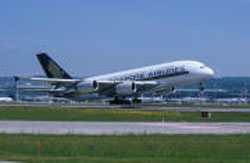 |
| Seeing polar bears in their natural habitat is the best wildlife sighting. |
Opened in 2014, 'Journey to Churchill' is a
permanent exhibit. The sprawling 10-acre exhibit showcases Northern Manitoba,
allowing visitors to connect with arctic species and landscapes, including
going "nose to nose" with a polar bear. It’s the closest you can get
to swimming with a polar bear and still stay dry and safe.
 |
| Zoo exhibit is a fabulous opportunity to see and learn about polar bears. |
“This is certainly the largest zoo project in Canada in the last
25 years,” said Don Peterkin, chief operations officer for the Assiniboine Park
Zoo. “Journey to Churchill will be the number one polar bear Arctic exhibit
anywhere in the zoo world.”
 | |||||
| Tourism to see polar bears gives Churchill's 800 inhabitants an economic boost. |
Gateway to the Arctic's showcase piece is the Sea Ice Passage, an
underwater viewing tunnel for watching polar bears and ringed seals frolic. In
separate pools divided by an acrylic wall, the predator and prey are still able
to see and smell each other. Visitors to this zone also experience the
360-degree Aurora Borealis Theater.
 |
| Polar bears congregate at frigid Hudson Bay near Churchill, Canada. |
Churchill Coast offers a re-creation of the famous northern Manitoba town, and here visitors can watch polar bears congregate, just as they
do along the Hudson Bay coast. The attached International Polar Bear
Conservation Centre (IPBCC) is a world-class research facility caring for
orphaned and at-risk polar bears.
"The whole intent of the project is to create a love
of wildlife, while educating attendees about conservation issues and climate
change,” Peterkin says "It's an important message. People like to feel
they can do something to make a difference, and by coming to the zoo and
supporting what we are doing they are helping to save these animals,” he adds.
 |
| Sunset glistens on the late fall ice--before Hudson Bay is frozen over. |
While you're there, grab a bite to eat at Tundra Grill Restaurant and watch polar bears roam. Children can romp and play at the Polar
Playground’s ice caves, super slides, and a wall-sized icicle xylophone.
Information courtesy
of Cathy Senecal, Travel Manitoba
Photos by Larry and Beverly Burmeier


















































